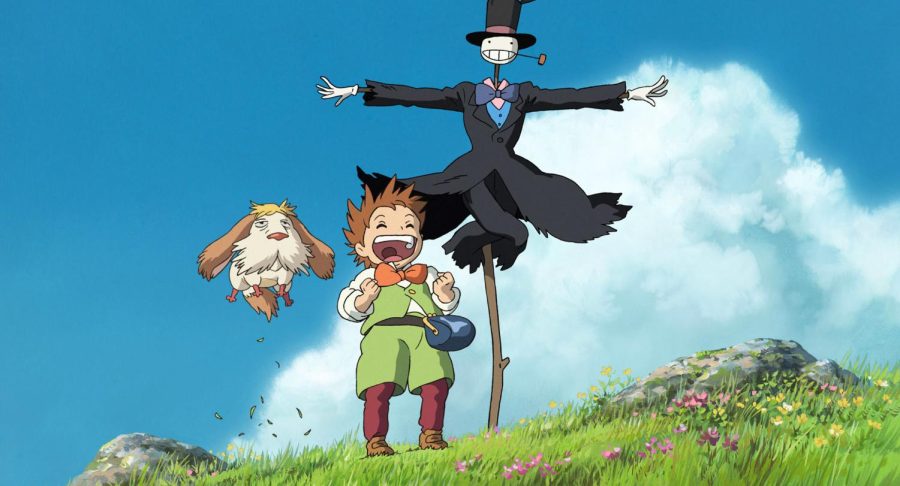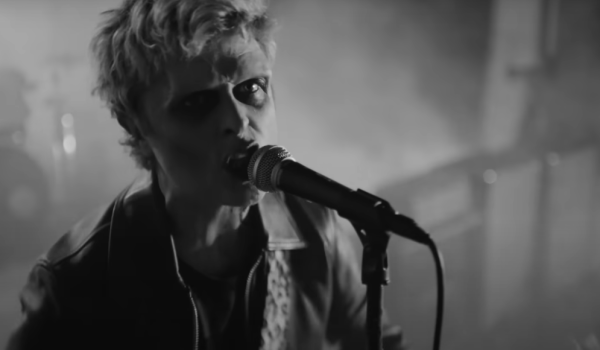Howl’s Moving Castle and Its Commentary on the Iraq War
The Iraq War was a brutal conflict that spanned a majority of our lives as current college students. Lasting from 2003 to 2011, it took anywhere between 34,000 and 37,000 lives. The war was given a large amount of media coverage in the beginning because then-President George W. Bush was debating invading Iraq from the day that the 9/11 terrorist attacks happened. However, this war was unlike any other in the amount of public information leaked and public scrutiny it faced in both its birth and death. One man who beautifully chastised this war was none other than legendary animator, director, and producer Hayao Miyazaki (宮崎 駿). In 2004, he unleashed unto the world a project that had been in production since 2001, Howl’s Moving Castle.
The film is an adaptation of English author Diana Wynne Jones’ book of the same name. Set in a fictional world where corrupt monarchs abuse the immense power of witches and wizards for political power, the story follows Sophie, a milliner (hat-maker), and Howl, a mischievous and handsome wizard. Howl crosses paths with Sophie after she is cursed by the Witch of the Waste to look like a 90 year old woman. In order to break the curse, Sophie then begins working for Howl while trying to find out how to break the curse placed on him by a self-described “powerful and scary fire demon” named Calcifer. During this journey, Sophie learns what it means to accept true inner beauty, and Howl learns to stop running from his fears..
The film is a very touching tale, and struck a deep chord with me the first time I watched it over the summer. I first watched it in my room and allowed myself to be surrounded by the marvellous art design and characters. I was also blown away by the very realistic and human look on events as opposed to carrying on a very silly aesthetic that was common in shows and movies that were animated at the time. Up to that point, the work that Studio Ghibli produced was mainly silly tales about ghosts (Spirited Away) and a girl raised by wolves and a young man afflicted by an ancient curse that’ll slowly kill him (Princess Mononoke).
Growing up, I saw that other media heavily demonized wizardry and made it something to be seen in shadows and heard with hushed tones. Howl’s Moving Castle, on the other hand, almost glorified their wizards and witches, with Howl being akin to a boogieman. This is shown when Sophie’s sister Lettie says that he’d “eat your heart” in reference to Sophie’s encounter with him, basing it on hearsay about him eating the hearts of young, beautiful women. This was something that came off as comforting, as it allowed something as grand as Howl’s castle to exist. The castle is an amalgam of random steampunk sections that make a living, breathing being with a mouth, legs, lungs, and a heart at the center of it all in the form of Calcifer in his fireplace. This felt very akin to the 2006 film Monster House, in which the soul of a woman is trapped in the house she and her husband built, causing it to come to life when it feels threatened.
The characters came off as very real while also remaining true to Miyazaki’s sense for the fun and imaginative, a quality that I can appreciate as it allows me some lee-way in terms of my view on them. Sophie is a very serious and stern character when she’s young, never allowing herself to have fun because their hat-shop was their father’s dream. However, when she’s older, she morphs into this fun, charismatic person who makes jokes with Howl’s apprentice Markl, a young kid who gives way to some of the best jokes in the entire film. She seems to view the bright side of her predicament, saying her clothes fit her better, that she’s the worst witch of them all, “a witch that cleans!” and even allows herself to become more honest and open about her problems in life as a result of her realizing she may never get back to how she was before. Markl is the regular cute kid character who’s always making things seem funnier than they are. A highlight is when he and Sophie are shopping for groceries, and when she is looking at potatoes, he simply says “mmmm, I hate potatoes,” and that one line is easily the best joke in the entire film. In this scene, he’s wearing this elderly wizard costume and has this fake voice up which sounds exactly how it appears, as a child attempting to be old. But it’s then followed up by him saying, in the exact same way, “mmm, I hate fish” and it always cracks me up.
The best character, however, is Howl. As a person, he’s the most complex protagonist in any Ghibli film I’ve seen up to this point. He isn’t meant to be inherently good, despite the beginning showing him as kind and gentle to the young Sophie, who is rather beautiful and would get such treatment from Howl, who is said to eat the hearts of lovely women. He eventually morphs into a very deep person towards the climax of the movie, when he is forced to fight against both sides of the war and continually rip his humanity away from himself in his attempts at sabotage on both sides. This complexity eventually comes full circle towards the end as his efforts to fight eventually morph into a desire to keep Sophie, Markl, a recon dog who works for the king named Heen, and a now powerless Witch of the Waste safe from the war’s devastating bombs.
The film isn’t just used as a way to tell a tale of love and magic but was also used by Miyazaki to chastise the invasion of Iraq, which was happening during the production of the film. He does this through open and deliberate depictions of war as a unanimously bad thing, with no good guys and no bad guys being shown or spoken of. Howl, who uses two aliases in then-warring nations, refuses to fight for either king in a pointless war that resolves itself by the end of the film. He instead disappears into the night and flies around as a bird-like creature to mess with the warships and his fellow wizards who fully turned themselves into monsters and do their respective king’s bidding. The film itself also never allows its viewers to feel sympathy for either nation, instead only showing the cruel effects of war. In one scene, an already-destroyed ship that’s being towed back into the harbor is bombed again, sending the town into a frenzy, followed by pamphlets of enemy propaganda being dropped on the town. The only bit of sympathy we get for either nation is when Sophie mentions how her viewpoint is that the king of Kingsbury should hear out all his citizens. This comes after Howl mentions that he can’t simply refuse to serve in the war because he took an oath to serve the king when he entered into the royal sorcery academy.
Coming out of the film, one can’t help but feel a slightly different outlook on numerous things. I felt a different outlook on war, on people, on magic-based movies, on Ghibli, on Miyazaki. The film showed me that Ghibli doesn’t just create the kid’s movies that they originally made like Castle in the Sky and was more than simply a fat raccoon god in My Neighbor Totoro. I found this film to be almost too adult to be Ghibli, as it wasn’t used for entertainment, like The Cat Returns which came out two years before this or My Neighbor Totoro. Howl’s Moving Castle showed a rich world full of colorful characters and an environment that reminded me of when I was a young child playing Ni-No-Kuni: Wrath of the White Witch, animated by Studio Ghibli.
The film was recently shown again in theaters across the U.S. for Ghibli fest, an event in which nine films by Studio Ghibli, ranging from Princess Mononoke to Spirited Away, happens from April to October.
The film’s themes of pacifism are exemplified during a scene in which Howl and Sophie stand in a serene field of flowers, holding one another before they are jarringly interrupted by a warship flying past, to which Howl uses his powers to shut off its engine. Howl allows himself to become a villain in some scenes; he ruthlessly fights both sides and shows how he begins as an anti-hero who uses aggression to promote his pacifistic tendencies. This theme was intentional, as Miyazaki is a known pacifist and sought to make a movie that would, during the era it came out, fail in America with its blatant anti-war messages. However, these messages are a vital part of the film and make Howl’s character become a unique look at how Miyazaki presents his main heroes. Howl is not subservient to the king but he does listen to others, especially Sophie. This theme of pacifism stems throughout the film and made the watch just that much more eye-opening with the current crisis in the Ukraine, to which some aspects of the film draws comparisons.
Howl’s Moving Castle is as relevant today, with the crisis in Ukraine, as it was when it came out in 2004 during the Iraq War. The film is animated by Studio Ghibli with so much smoothness and no jilted frames or technological mistakes that it feels like Ghibli’s first few films which were all hand-drawn. When I first watched this film, I fell in love with every aspect of it, and now being able to watch it again in the theaters with a new view on the beginning and middle knowing how the end will turn out, it makes the entire film one giant warm comfort. I highly recommend it to anyone who is either interested in Ghibli or hasn’t gotten around to this modern masterpiece.





